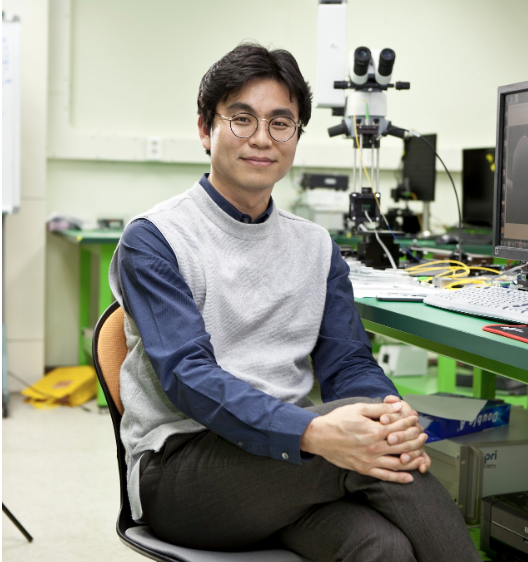News & Event
Alumni Interview
- HOME
- News & Event
- Alumni Interview
- Author
- 전기전자컴퓨터공학부
- Views
- 424
- Registraion Date
- 2025-03-31

Q. Hello, Professor. Could you briefly introduce yourself?
Hello, my name is Tae Joong Eom. I graduated from the Department of Information and Communication Engineering in 2005 and worked at the Advanced Photonics Research Institute for about 15 years. Currently, I am a professor in the Department of Opto-Mechatronics Engineering at Pusan National University, and I serve as the Editor-in-Chief of K-Light, the magazine of the Optical Society of Korea.
Q. What kind of research have you mainly focused on?
My academic journey has been quite diverse. I majored in electronic engineering as an undergraduate and studied information and communication engineering in graduate school, but I took many courses related to optics and lasers. After earning my Ph.D., my research shifted toward biophotonics. I have been primarily working on applying optical imaging technologies to biomedical applications and precision measurements. Recently, I’ve been focusing on developing endoscopic systems for cardiovascular disease diagnosis and technologies for ophthalmic disease diagnosis and treatment monitoring.
Q. Your research fields have changed over time. Was that difficult for you?
It definitely wasn’t easy. During graduate school, it was particularly tough because I didn’t have a strong background in physics compared to my peers. I remember studying late into the night and still getting the lowest score on a midterm exam. Even during my postdoc, I had to shift to a new research field. There were many times I wondered why I was making things harder for myself. But those experiences taught me how to adapt, and they helped me become more resilient. I guess I wasn’t afraid to try. Over time, that fear of change started to fade.
Q. Is there a memorable experience from your research career?
There was a time when I led a major research project, only to realize midway that it was based on flawed prior research. It was difficult to accept, but I quickly decided to be honest with my team and explain the situation. Together, we worked hard to explore a new direction. After about a year of intense effort, we were able to successfully complete the project. It eventually led to a series of three papers. What started as a failure became a turning point for me. I’m still collaborating with the same team members to this day.
Q. How do you usually relieve stress?
During my Ph.D., I struggled with stress quite a bit, so I tried all sorts of things—oil painting, traveling, drinking, tango, even running. I haven’t found a perfect way yet. But spending time with people completely outside the research world gave me a lot of comfort. Being in a totally different environment helped blow the stress away.
Q. How has your work changed since moving from a research institute to a university professor?
At the research institute, everyone was an expert and roles were clearly defined. As a professor, I realized I'm not just a researcher—I'm also an educator. I’ve come to believe that it’s important to give students the time and space to build their own foundations. Just like the structured and in-depth education I received at KAIST, I want to provide that kind of support for my students now. I’ve come to truly value the time spent together with them.
Q. What are your future research goals and directions?
Currently, I’m developing new imaging technologies for disease diagnosis and treatment monitoring. But research only accounts for about one-third of my work. The rest is focused on how to best nurture my students. I’m working to build collaborations with other universities, research institutes, and industries so that my students can broaden their perspectives. In the long term, I hope to establish a stable system that can be a meaningful legacy for the next generation.
Q. Is there anything you’d especially like to say to students or young researchers?
When I was a student, there was a big boom in optical communications, so I dove into that field. But by the time I graduated, the bubble had burst, and I was very discouraged. Now, nearly 20 years later, the same technologies are being revisited for aerospace applications like inter-satellite optical communication systems. Trends come and go. What truly matters is doing what you love consistently—because eventually, your time will come.
To students, I always say: “Distinguish between your technical skills and your genuine interests.” Just because you're good at something doesn't mean it's your calling. When you find a field that truly moves you, you can commit to it, even through love-hate phases. That’s the kind of passion that sustains research.

